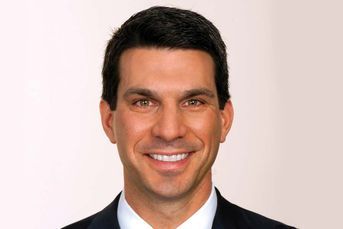Getting it down on paper
A written succession plan is complex, with many decisions feeding into the final product.
Writing a formal succession plan can seem daunting — many plans reach hundreds of pages — and therefore, some advisers push it off as long as possible until retirement is close at hand. For inspiration to get moving on a written succession plan, advisory firm owners might want to digest a troubling situation that industry consultants often see.
That situation: An owner unexpectedly passes away or is incapacitated, and no detailed succession plan is in place. No one at the firm has the skills needed to run the business, no one is authorized to take over the owner’s key functions and business continuity is halted. The result is simmering chaos while the firm dissolves.
“All value is lost,” said David Canter, executive vice president of the practice management and consulting group for Fidelity Institutional Wealth Services.
The antidote — a detailed written succession plan — might seem intimidating. Indeed, the process can take several years, involve difficult emotions and result in a three-inch-thick legal document. But the outcome is certainty of the firm’s future and, consultants say, peace of mind for everyone involved.
A study released late last year by the Financial Planning Association Research and Practice Institute showed that only 25% of advisers have a succession plan in place. Research this year by Cerulli Associates Inc. pegs the average age of financial advisers at 52. The combination of an aging demographic and dearth of succession planning does not bode well for a smooth industry transition to the next generation of advisers.
FIRST STEP
The time to act is now, and the first step is to determine which succession scenario suits the firm. Basically, three options exist: an internal succession, a merger with another firm or a straight sale of the business.
Most firms seek to hand over the reins internally. And when a written succession plan is done properly, the upshot is worth the effort.
“The owners are creating partners, not competitors,” said Todd Fulks, senior vice president for consulting group FP Transitions. “It’s a way to [encourage] people to invest in their career in a way that is of endurable and transferable value.”
Once the goal is set, owners must evaluate their internal team, Mr. Canter said. Considerations include whether any employees have the skills to run and expand the firm, and whether they would be interested in ownership.
It can be a tricky exercise and one possible reason advisers collectively have appeared uneager to start the succession-planning process.
“What they worry about is there not being that entrepreneurial drive or business know-how needed to sustain the firm,” Mr. Canter said.
OWNERSHIP DETAILS
Once the decision is made and the successors are on board, the process moves from planning to details.
“We turn the corner at cash flow analysis,” Mr. Fulks said, explaining that logistics must feed into the written plan — the goals, the time horizon of a controlled handoff and the math.
Further choices exist, such as creation of an equity stake for the next generation of owners, the value of the equity and what will happen to the equity if the employee chooses to leave the firm or is fired. Experts say it is important to ensure that any equity stake reverts back to the interested parties — the owners or successors — if the employee leaves.
Even provisions such as non-compete agreements and non-solicitation agreements become part of that process.
Other considerations include fully grasping the business, legal and tax issues, and getting a handle on the firm’s value, either through the services of an outside consultant or by establishing an internal methodology, Mr. Canter said.
Additionally, the tax structure of a firm can dictate how particulars of a written succession plan can be handled.
“You’ve got to think about as many contingencies and potential situations as possible in the planning process,” said Mark Hurley, chairman and chief executive at Fiduciary Network. “A real succession plan takes a staggering amount of work.”
One provision Mr. Fulks often sees in written plans allows an owner to shift to employee status as a way to continue using the firm’s health insurance until Medicare eligibility kicks in.
“It’s happened enough that it’s not surprising,” he said.
Mr. Fulks also has seen owners negotiate a deal where they aren’t required to pay for advisory services from the firm.
And sometimes owners want to be rainmakers and receive continued remuneration for their efforts, he said.
TEMPLATE FOR ADVISERS
Mr. Hurley provides clients with a template of sorts — a 200-page document that asks questions on all succession aspects an owner needs to think about before writing the plan.
“It’s a good starting point for an internal discussion,” he said.
Mr. Hurley warned that emotions can run high as the succession process moves ahead.
“I even once thought an argument between two people was going to come to blows,” he said.
Mr. Canter agrees that advisers should be prepared for emotions and differences in what is often “a healthy tension between the desires of the founders and the next generation.”
It often makes sense to use an interim written agreement until the detailed plan is finalized and in play, he said.
“It’s kind of like putting in a will before you do the full estate plan,” Mr. Canter said.
The fastest succession planning that Mr. Hurley has seen took three months. But he wrapped up one last year that took more than two and a half years.
The average length of time is 18 months, Mr. Hurley said.
Despite the hurdles, “if you have at least $3 million in annual revenue and don’t have a written succession plan in place, you’re crazy,” he said.
Sarah O’Brien is a freelance writer in Hampstead, Md.
Learn more about reprints and licensing for this article.





